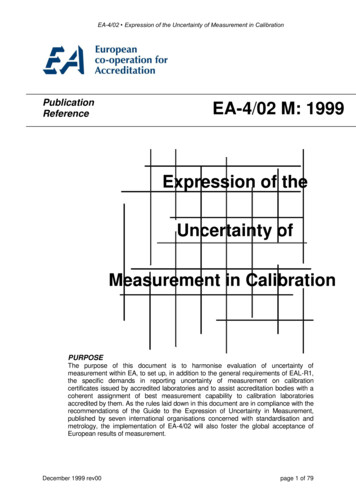
Transcription
EA-4/02 Expression of the Uncertainty of Measurement in CalibrationPublicationReferenceEA-4/02 M: 1999Expression of theUncertainty ofMeasurement in CalibrationPURPOSEThe purpose of this document is to harmonise evaluation of uncertainty ofmeasurement within EA, to set up, in addition to the general requirements of EAL-R1,the specific demands in reporting uncertainty of measurement on calibrationcertificates issued by accredited laboratories and to assist accreditation bodies with acoherent assignment of best measurement capability to calibration laboratoriesaccredited by them. As the rules laid down in this document are in compliance with therecommendations of the Guide to the Expression of Uncertainty in Measurement,published by seven international organisations concerned with standardisation andmetrology, the implementation of EA-4/02 will also foster the global acceptance ofEuropean results of measurement.December 1999 rev00page 1 of 79
EA-4/02 Expression of the Uncertainty of Measurement in CalibrationAuthorshipThis document has been drafted by EAL Task Force for revision of WECC Doc. 191990 on behalf of the EAL Committee 2 (Calibration and Testing Activities). Itcomprises a thorough revision of WECC Doc. 19-1990 which it replaces.Official languageThe text may be translated into other languages as required. The English languageversion remains the definitive version.CopyrightThe copyright of this text is held by EA. The text may not be copied for resale.Further informationFor further information about this publication, contact your National member of EA.You will find the list of members at the web-site: www.european-accreditation.orgCategory: Application documents and Technical Adcvisory documents forConformity Assessment BodiesEA-4/02 is mandatory documentDate of Approval: December 1999Date of Implementation: December 2000Transitional Period: one yearDecember 1999 rev00Page 2 of 79
EA-4/02 Expression of the Uncertainty of Measurement in CalibrationCONTENTS123INTRODUCTION4OUTLINE AND DEFINITIONS4EVALUATION OF UNCERTAINTY OF MEASUREMENT OF INPUTESTIMATES64CALCULATION OF THE STANDARD UNCERTAINTY OF THEOUTPUT ESTIMATE85EXPANDED UNCERTAINTY OF MEASUREMENT116STATEMENT OF UNCERTAINTY OF MEASUREMENT INCALIBRATION CERTIFICATES127STEP-BY-STEP PROCEDURE FOR CALCULATING THEUNCERTAINTY OF MEASUREMENT138REFERENCES13APPENDIX A15APPENDIX B18APPENDIX C20APPENDIX D21APPENDIX E24SUPPLEMENT 127SUPPLEMENT 251December 1999 rev00Page 3 of 79
EA-4/02 Expression of the Uncertainty of Measurement in Calibration1INTRODUCTION1.1This document sets down the principles of and the requirements on the evaluation ofthe uncertainty of measurement in calibration and the statement of this uncertaintyin calibration certificates. The treatment is kept on a general level to suit all fields ofcalibration. The method outlined may have to be supplemented by more specificadvice for different fields, to make the information more readily applicable. Indeveloping such supplementary guidelines the general principles stated in thisdocument should be followed to ensure harmonisation between the different fields.1.2The treatment in this document is in accordance with the Guide to the Expression ofUncertainty in Measurement, first published in 1993 in the name of BIPM, IEC,IFCC, ISO, IUPAC, IUPAP and OIML [ref. 1]. But whereas [ref. 1] establishesgeneral rules for evaluating and expressing uncertainty in measurement that can befollowed in most fields of physical measurements, this document concentrates onthe method most suitable for the measurements in calibration laboratories anddescribes an unambiguous and harmonised way of evaluating and stating theuncertainty of measurement. It comprises the following subjects: definitions basic to the document; methods for evaluating the uncertainty of measurement of input quantities; relationship between the uncertainty of measurement of the output quantity andthe uncertainty of measurement of the input quantities; expanded uncertainty of measurement of the output quantity; statement of the uncertainty of measurement; a step by step procedure for calculating the uncertainty of measurement.Worked out examples showing the application of the method outlined here tospecific measurement problems in different fields will be given in supplements.Evaluation of uncertainty of measurement is also addressed in several of the EALdocuments which provide guidance on calibration methods, some of thesedocuments containing specific worked out examples.1.3Within EAL the best measurement capability (always referring to a particularquantity, viz. the measurand) is defined as the smallest uncertainty of measurementthat a laboratory can achieve within its scope of accreditation, when performingmore or less routine calibrations of nearly ideal measurement standards intended todefine, realize, conserve or reproduce a unit of that quantity or one or more of itsvalues, or when performing more or less routine calibrations of nearly idealmeasuring instruments designed for the measurement of that quantity. Theassessment of best measurement capability of accredited calibration laboratorieshas to be based on the method described in this document but shall normally besupported or confirmed by experimental evidence. To assist accreditation bodieswith the assessment of the best measurement capability some further explanationsare given in Annex A.2OUTLINE AND DEFINITIONSNote:Terms of special relevance to the context of the main text are writtenin bold when they appear for the first time in this document. Appendix Bcontains a glossary of these terms together with referencesDecember 1999 rev00Page 4 of 79
EA-4/02 Expression of the Uncertainty of Measurement in Calibration2.1The statement of the result of a measurement is complete only if it contains both thevalue attributed to the measurand and the uncertainty of measurement associatedwith that value. In this document all quantities which are not exactly known aretreated as random variables, including the influence quantities which may affectthe measured value.2.2The uncertainty of measurement is a parameter, associated with the result of ameasurement, that characterises the dispersion of the values that could reasonablybe attributed to the measurand [ref. 2]. In this document the shorthand termuncertainty is used for uncertainty of measurement if there is no risk ofmisunderstanding. For typical sources of uncertainty in a measurement see the listgiven in Annex C.2.3The measurands are the particular quantities subject to measurement. Incalibration one usually deals with only one measurand or output quantity Y thatdepends upon a number of input quantities Xi (i 1, 2 , , N) according to thefunctional relationshipY f(X1, X2, , XN )(2.1)The model function f represents the procedure of the measurement and the methodof evaluation. It describes how values of the output quantity Y are obtained fromvalues of the input quantities Xi. In most cases it will be an analytical expression, butit may also be a group of such expressions which include corrections and correctionfactors for systematic effects, thereby leading to a more complicated relationshipthat is not written down as one function explicitly. Further, f may be determinedexperimentally, or exist only as a computer algorithm that must be evaluatednumerically, or it may be a combination of all of these.2.4The set of input quantities Xi may be grouped into two categories according to theway in which the value of the quantity and its associated uncertainty have beendetermined:(a) quantities whose estimate and associated uncertainty are directly determined inthe current measurement. These values may be obtained, for example, from asingle observation, repeated observations, or judgement based on experience.They may involve the determination of corrections to instrument readings aswell as corrections for influence quantities, such as ambient temperature,barometric pressure or humidity;(b) quantities whose estimate and associated uncertainty are brought into themeasurement from external sources, such as quantities associated withcalibrated measurement standards, certified reference materials or referencedata obtained from handbooks.2.5An estimate of the measurand Y, the output estimate denoted by y, is obtainedfrom equation (2.1) using input estimates xi for the values of the input quantities Xiy f ( x1 , x2 ,., x N )(2.2)It is understood that the input values are best estimates that have been corrected forall effects significant for the model. If not, the necessary corrections have beenintroduced as separate input quantities.December 1999 rev00Page 5 of 79
EA-4/02 Expression of the Uncertainty of Measurement in Calibration2.6For a random variable the variance of its distribution or the positive square root ofthe variance, called standard deviation, is used as a measure of the dispersion ofvalues. The standard uncertainty of measurement associated with the outputestimate or measurement result y, denoted by u(y), is the standard deviation of themeasurand Y. It is to be determined from the estimates xi of the input quantities Xiand their associated standard uncertainties u(xi). The standard uncertaintyassociated with an estimate has the same dimension as the estimate. In somecases the relative standard uncertainty of measurement may be appropriatewhich is the standard uncertainty of measurement associated with an estimatedivided by the modulus of that estimate and is therefore dimensionless. Thisconcept cannot be used if the estimate equals zero.3EVALUATION OF UNCERTAINTY OF MEASUREMENT OF INPUTESTIMATES3.1General considerations3.1.1The uncertainty of measurement associated with the input estimates is evaluatedaccording to either a 'Type A' or a 'Type B' method of evaluation. The Type Aevaluation of standard uncertainty is the method of evaluating the uncertainty bythe statistical analysis of a series of observations. In this case the standarduncertainty is the experimental standard deviation of the mean that follows from anaveraging procedure or an appropriate regression analysis. The Type B evaluationof standard uncertainty is the method of evaluating the uncertainty by means otherthan the statistical analysis of a series of observations. In this case the evaluation ofthe standard uncertainty is based on some other scientific knowledge.Note: There are occasions, seldom met in calibration, when all possible values of aquantity lie on one side of a single limit value. A well known case is the socalled cosine error. For the treatment of such special cases, see ref. 1.3.2Type A evaluation of standard uncertainty3.2.1The Type A evaluation of standard uncertainty can be applied when severalindependent observations have been made for one of the input quantities under thesame conditions of measurement. If there is sufficient resolution in the measurementprocess there will be an observable scatter or spread in the values obtained.3.2.2Assume that the repeatedly measured input quantity Xi is the quantity Q. With nstatistically independent observations (n 1), the estimate of the quantity Q is q ,the arithmetic mean or the average of the individual observed values qj(j 1, 2, , n)1 nq qjn j 1(3.1)The uncertainty of measurement associated with the estimate q is evaluatedaccording to one of the following methods:(a) An estimate of the variance of the underlying probability distribution is theexperimental variance s²(q) of values qj that is given byDecember 1999 rev00Page 6 of 79
EA-4/02 Expression of the Uncertainty of Measurement in Calibrations2 (q) 1 n( q j q )2 n 1 j 1(3.2)Its (positive) square root is termed experimental standard deviation. The bestestimate of the variance of the arithmetic mean q is the experimental varianceof the mean given bys2 (q ) s2 (q)n(3.3)Its (positive) square root is termed experimental standard deviation of themean. The standard uncertainty u(q ) associated with the input estimate q isthe experimental standard deviation of the meanu(q ) s(q )(3.4)Warning: Generally, when the number n of repeated measurements is low (n 10), the reliability of a Type A evaluation of standard uncertainty, as expressedby equation (3.4), has to be considered. If the number of observations cannotbe increased, other means of evaluating the standard uncertainty given in thetext have to be considered.(b) For a measurement that is well-characterised and under statistical control acombined or pooled estimate of variance sp2 may be available thatcharacterises the dispersion better than the estimated standard deviationobtained from a limited number of observations. If in such a case the value ofthe input quantity Q is determined as the arithmetic mean q of a small numbern of independent observations, the variance of the mean may be estimated bys (q ) 2sp2n(3.5)The standard uncertainty is deduced from this value by equation (3.4).3.3Type B evaluation of standard uncertainty3.3.1The Type B evaluation of standard uncertainty is the evaluation of the uncertaintyassociated with an estimate xi of an input quantity Xi by means other than thestatistical analysis of a series of observations. The standard uncertainty u(xi) isevaluated by scientific judgement based on all available information on the possiblevariability of Xi. Values belonging to this category may be derived from previous measurement data; experience with or general knowledge of the behaviour and properties ofrelevant materials and instruments; manufacturer’s specifications; data provided in calibration and other certificates; uncertainties assigned to reference data taken from handbooks.December 1999 rev00Page 7 of 79
EA-4/02 Expression of the Uncertainty of Measurement in Calibration3.3.2The proper use of the available information for a Type B evaluation of standarduncertainty of measurement calls for insight based on experience and generalknowledge. It is a skill that can be learned with practice. A well-based Type Bevaluation of standard uncertainty can be as reliable as a Type A evaluation ofstandard uncertainty, especially in a measurement situation where a Type Aevaluation is based only on a comparatively small number of statisticallyindependent observations. The following cases must be discerned:(a) When only a single value is known for the quantity Xi, e.g. a single measuredvalue, a resultant value of a previous measurement, a reference value from theliterature, or a correction value, this value will be used for xi. The standarduncertainty u(xi) associated with xi is to be adopted where it is given. Otherwiseit has to be calculated from unequivocal uncertainty data. If data of this kind arenot available, the uncertainty has to be evaluated on the basis of experience.(b) When a probability distribution can be assumed for the quantity Xi, based ontheory or experience, then the appropriate expectation or expected value and thesquare root of the variance of this distribution have to be taken as the estimate xiand the associated standard uncertainty u(xi), respectively.(c) If only upper and lower limits a and a– can be estimated for the value of thequantity Xi (e.g. manufacturer’s specifications of a measuring instrument, atemperature range, a rounding or truncation error resulting from automated datareduction), a probability distribution with constant probability density betweenthese limits (rectangular probability distribution) has to be assumed for thepossible variability of the input quantity Xi. According to case (b) above this leadstoxi 1(a a )2 (3.6)for the estimated value andu 2 ( xi ) 1(a a ) 212(3.7)for the square of the standard uncertainty. If the difference between the limitingvalues is denoted by 2a, equation (3.7) yields1u 2 ( xi ) a 23(3.8)The rectangular distribution is a reasonable description in probability terms ofone’s inadequate knowledge about the input quantity Xi in the absence of anyother information than its limits of variability. But if it is known that values of thequantity in question near the centre of the variability interval are more likely thanvalues close to the limits, a triangular or normal distribution may be a bettermodel. On the other hand, if values close to the limits are more likely thanvalues near the centre, a U-shaped distribution may be more appropriate.4CALCULATION OF THE STANDARD UNCERTAINTY OF THE OUTPUTESTIMATE4.1For uncorrelated input quantities the square of the standard uncertainty associatedwith the output estimate y is given byDecember 1999 rev00Page 8 of 79
EA-4/02 Expression of the Uncertainty of Measurement in CalibrationNu 2 ( y ) ui2 ( y )(4.1)i 1Note: There are cases, seldom occurring in calibration, where the model function isstrongly non-linear or some of the sensitivity coefficients [see equation (4.2) and(4.3)] vanish and higher order terms have to be included into equation (4.1). Fora treatment of such special cases see ref. 1.The quantity ui(y) (i 1, 2, , N) is the contribution to the standard uncertaintyassociated with the output estimate y resulting from the standard uncertaintyassociated with the input estimate xiui(y) ciu(xi)(4.2)where ci is the sensitivity coefficient associated with the input estimate xi, i.e. thepartial derivative of the model function f with respect to Xi, evaluated at the inputestimates xi,ci f f xi X i(4.3)X 1 x1 . X N x N4.2The sensitivity coefficient ci describes the extent to which the output estimate y isinfluenced by variations of the input estimate xi. It can be evaluated from the modelfunction f by equation (4.3) or by using numerical methods, i.e. by calculating thechange in the output estimate y due to a change in the input estimate xi of u(xi) and-u(xi) and taking as the value of ci the resulting difference in y divided by 2u(xi).Sometimes it may be more appropriate to find the change in the output estimate yfrom an experiment by repeating the measurement at e.g. xi u(xi).4.3Whereas u(xi) is always positive, the contribution ui(y) according to equation (4.2) iseither positive or negative, depending on the sign of the sensitivity coefficient ci. Thesign of ui(y) has to be taken into account in the case of correlated input quantities,see equation (D4) of Annex D.4.4If the model function f is a sum or difference of the input quantities XiNf ( X 1 , X 2 , , X N ) p i X i(4.4)i 1the output estimate according to equation (2.2) is given by the corresponding sum ordifference of the input estimatesNy pi x i(4.5)i 1whereas the sensitivity coefficients equal pi and equation (4.1) converts toNu 2 ( y ) pi2 u 2 ( xi )(4.6)i 1December 1999 rev00Page 9 of 79
EA-4/02 Expression of the Uncertainty of Measurement in Calibration4.5If the model function f is a product or quotient of the input quantities XiNf ( X1, X 2 , , X N ) c X ipi(4.7)i 1the output estimate again is the corresponding product or quotient of the inputestimatesNy c xipi(4.8)i 1The sensitivity coefficients equal piy/xi in this case and an expression analogous toequation (4.6) is obtained from equation (4.1), if relative standard uncertaintiesw(y) u(y)/ y and w(xi) u(xi)/ xi are used,Nw 2 ( y ) pi2 w 2 ( xi )(4.9)i 14.6If two input quantities Xi and Xk are correlated to some degree, i.e. if they aremutually dependent in one way or another, their covariance also has to beconsidered as a contribution to the uncertainty. See Annex D for how this has to bedone. The ability to take into account the effect of correlations depends on theknowledge of the measurement process and on the judgement of mutualdependency of the input quantities. In general, it should be kept in mind thatneglecting correlations between input quantities can lead to an incorrect evaluationof the standard uncertainty of the measurand.4.7The covariance associated with the estimates of two input quantities Xi and Xk maybe taken to be zero or treated as insignificant if(a) the input quantities Xi and Xk are independent, for example, because they havebeen repeatedly but not simultaneously observed in different independentexperiments or because they represent resultant quantities of differentevaluations that have been made independently, or if(b) either of the input quantities Xi and Xk can be treated as constant, or if(c) investigation gives no information indicating the presence of correlationbetween the input quantities Xi and Xk.Sometimes correlations can be eliminated by a proper choice of the model function.4.8The uncertainty analysis for a measurement — sometimes called the uncertaintybudget of the measurement — should include a list of all sources of uncertaintytogether with the associated standard uncertainties of measurement and themethods of evaluating them. For repeated measurements the number n ofobservations also has to be stated. For the sake of clarity, it is recommended topresent the data relevant to this analysis in the form of a table. In this table allquantities should be referenced by a physical symbol Xi or a short identifier. Foreach of them at least the estimate xi, the associated standard uncertainty ofmeasurement u(xi), the sensitivity coefficient ci and the different uncertaintycontributions ui(y) should be specified. The dimension of each of the quantitiesshould also be stated with the numerical values given in the table.December 1999 rev00Page 10 of 79
EA-4/02 Expression of the Uncertainty of Measurement in Calibration4.9A formal example of such an arrangement is given as Table 4.1 applicable for thecase of uncorrelated input quantities. The standard uncertainty associated with themeasurement result u(y) given in the bottom right corner of the table is the root sumsquare of all the uncertainty contributions in the outer right column. The grey part ofthe table is not filled in.Table 4.1: Schematic of an ordered arrangement of the quantities,estimates, standard uncertainties, sensitivity coefficientsand uncertainty contributions used in the uncertaintyanalysis of a (x2):u(xN)c1c2:cNYyContribution to PANDED UNCERTAINTY OF MEASUREMENT5.1Within EAL it has been decided that calibration laboratories accredited by membersof the EAL shall state an expanded uncertainty of measurement U, obtained bymultiplying the standard uncertainty u(y) of the output estimate y by a coveragefactor k,U ku(y)(5.1)In cases where a normal (Gaussian) distribution can be attributed to the measurandand the standard uncertainty associated with the output estimate has sufficientreliability, the standard coverage factor k 2 shall be used. The assigned expandeduncertainty corresponds to a coverage probability of approximately 95%. Theseconditions are fulfilled in the majority of cases encountered in calibration work.5.2The assumption of a normal distribution cannot always be easily confirmedexperimentally. However, in the cases where several (i.e. N 3) uncertaintycomponents, derived from well-behaved probability distributions of independentquantities, e.g. normal distributions or rectangular distributions, contribute to thestandard uncertainty associated with the output estimate by comparable amounts,the conditions of the Central Limit Theorem are met and it can be assumed to a highdegree of approximation that the distribution of the output quantity is normal.5.3The reliability of the standard uncertainty assigned to the output estimate isdetermined by its effective degrees of freedom (see Annex E). However, thereliability criterion is always met if none of the uncertainty contributions is obtainedfrom a Type A evaluation based on less than ten repeated observations.December 1999 rev00Page 11 of 79
EA-4/02 Expression of the Uncertainty of Measurement in Calibration5.4If one of these conditions (normality or sufficient reliability) is not fulfilled, thestandard coverage factor k 2 can yield an expanded uncertainty corresponding toa coverage probability of less than 95%. In these cases, in order to ensure that avalue of the expanded uncertainty is quoted corresponding to the same coverageprobability as in the normal case, other procedures have to be followed. The use ofapproximately the same coverage probability is essential whenever two results ofmeasurement of the same quantity have to be compared, e.g. when evaluating theresults of an inter-laboratory comparison or assessing compliance with aspecification.5.5Even if a normal distribution can be assumed, it may still occur that the standarduncertainty associated with the output estimate is of insufficient reliability. If, in thiscase, it is not expedient to increase the number n of repeated measurements or touse a Type B evaluation instead of the Type A evaluation of poor reliability, themethod given in Annex E should be used.5.6For the remaining cases, i.e. all cases where the assumption of a normal distributioncannot be justified, information on the actual probability distribution of the outputestimate must be used to obtain a value of the coverage factor k that corresponds toa coverage probability of approximately 95%.6STATEMENT OF UNCERTAINTY OF MEASUREMENT IN CALIBRATIONCERTIFICATES6.1In calibration certificates the complete result of the measurement consisting of theestimate y of the measurand and the associated expanded uncertainty U shall begiven in the form (y U). To this an explanatory note must be added which in thegeneral case should have the following content:The reported expanded uncertainty of measurement is stated as the standarduncertainty of measurement multiplied by the coverage factor k 2, which for anormal distribution corresponds to a coverage probability of approximately 95%.The standard uncertainty of measurement has been determined in accordancewith EAL Publication EAL-R2.6.2However, in cases where the procedure of Annex E has been followed, theadditional note should read as follows:The reported expanded uncertainty of measurement is stated as the standarduncertainty of measurement multiplied by the coverage factor k XX, which fora t-distribution with eff YY effective degrees of freedom corresponds to acoverage probability of approximately 95%. The standard uncertainty ofmeasurement has been determined in accordance with EAL Publication EALR2.6.3The numerical value of the uncertainty of measurement should be given to at mosttwo significant figures. The numerical value of the measurement result should in thefinal statement normally be rounded to the least significant figure in the value of theexpanded uncertainty assigned to the measurement result. For the process ofrounding, the usual rules for rounding of numbers have to be used (for further detailson rounding see ISO 31-0:1992, Annex B). However, if the rounding brings thenumerical value of the uncertainty of measurement down by more than 5%, therounded up value should be used.December 1999 rev00Page 12 of 79
EA-4/02 Expression of the Uncertainty of Measurement in Calibration7STEP-BY-STEP PROCEDURE FOR CALCULATING THE UNCERTAINTYOF MEASUREMENT7.1The following is a guide to the use of this document in practice (cf. worked examplesin Annex F and in separate supplementary documents):(a) Express in mathematical terms the dependence of the measurand (outputquantity) Y on the input quantities Xi according to equation (2.1). In the case ofa direct comparison of two standards the equation may be very simple, e.g.Y X1 X2.(b) Identify and apply all significant corrections.(c) List all sources of uncertainty in the form of an uncertainty analysis inaccordance with Section 4.(d) Calculate the standard uncertainty u(q ) for repeatedly measured quantities inaccordance with sub-section 3.2.(e) For single values, e.g. resultant values of previous measurements, correctionvalues or values from the literature, adopt the standard uncertainty where it isgiven or can be calculated according to paragraph 3.3.2 (a). Pay attention to theuncertainty representation used. If no data are available from which thestandard uncertainty can be derived, state a value of u(xi) on the basis ofscientific experience.(f) For input quantities for which the probability distribution is known or can beassumed, calculate the expectation and the standard uncertainty u(xi) accordingto paragraph 3.3.2 (b). If only upper and lower limits are given or can beestimated, calculate the standard uncertainty u(xi) in accordance withparagraph 3.3.2 (c).(g) Calculate for each input quantity Xi the contribution ui(y) to the uncertaintyassociated with the output estimate resulting from the input estimate xiaccording to equations (4.2) and (4.3) and sum their squares as described inequation (4.1) to obtain the square of the standard uncertainty u(y) of themeasurand. If input quantities are known to be correlated, apply the proceduregiven in Annex D.(h) Calculate the expanded uncertainty U by multiplying the standard uncertaintyu(y) associated with the output estimate by a coverage factor k chosen inaccordance with Section 5.(i)8Report the result of the measurement comprising the estimate y of themeasurand, the associated expanded uncertainty U and the coverage factor kin the calibration certificate in accordance with Section 6.REFERENCES[1] Guide to the Expression of Uncertainty in Measurement, first edition, 1993,corrected and reprinted 1995, International Organization for Standardization(Geneva, Switzerland).[2] International Vocabulary of Basic and General Terms in Metrology, secondedition, 1993, International Organization for Standardization (Geneva,Switzerland).December 1999 rev00Page 13 of 79
EA-4/02 Expression of the Uncertainty of Measurement in Calibration[3] International Standard ISO 3534-1, Statistics - Vocabulary and symbols - Part I:Probability and General Statistical Term
EA-4/02 Expression of the Uncertainty of Measurement in Calibration December 1999 rev00 Page 5 of 79 2.1 The statement of the result of a measurement is complete only if it contains both the value attributed to the measurand and the uncertainty of measurement associated with that value. In this document all quantities which are not exactly known are
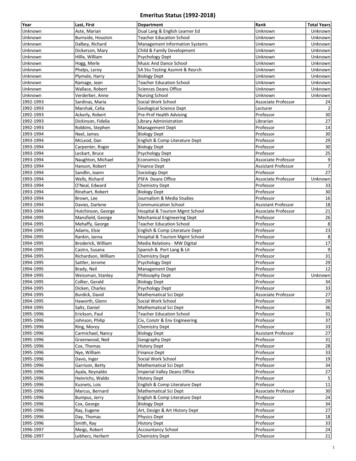
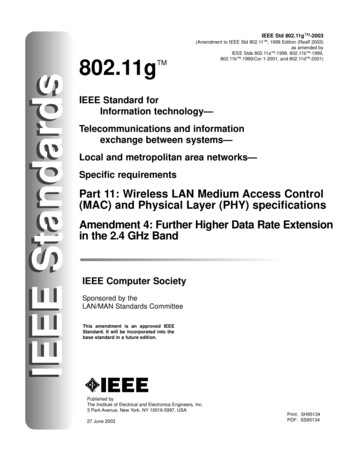
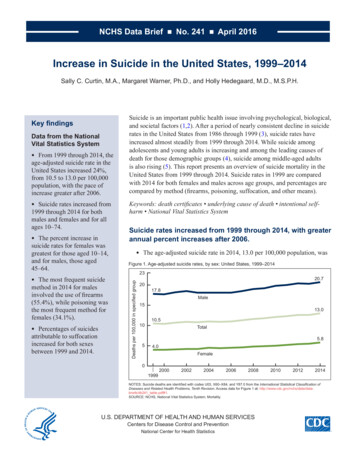
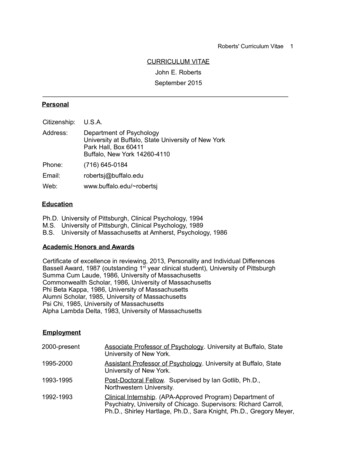
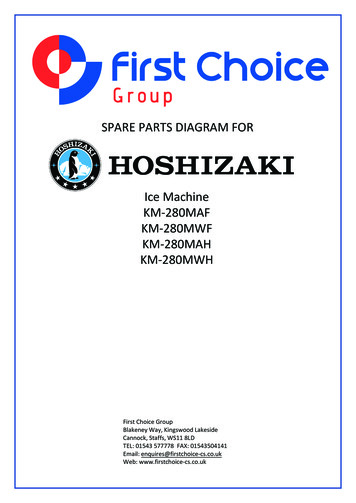

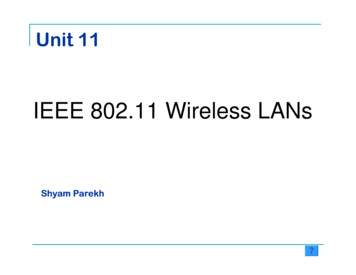

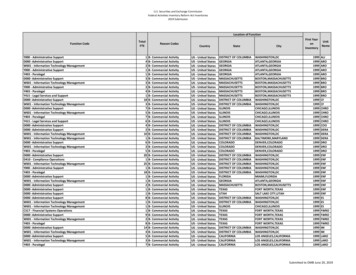
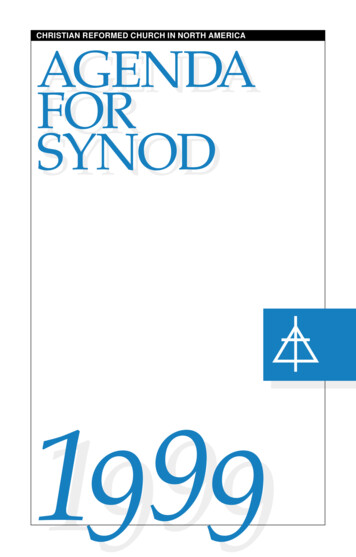
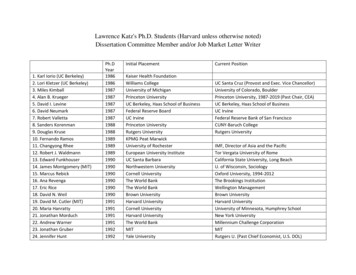
![Index [ zippersperformance ]](/img/41/catalog-red-shift-cams.jpg)